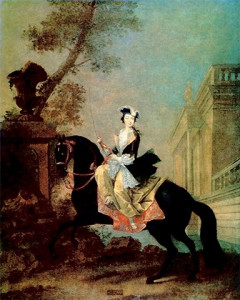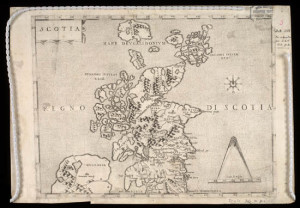 Relevant History welcomes back Anna Castle, who writes the Francis Bacon mysteries and the Lost Hat, Texas mysteries. She’s earned a series of degrees—BA Classics, MS Computer Science, and PhD Linguistics—and has had a corresponding series of careers—waitressing, software engineering, assistant professor, and archivist. Writing fiction combines her lifelong love of stories and learning. To learn more about her and her books, visit her web site and follow her on Facebook.
Relevant History welcomes back Anna Castle, who writes the Francis Bacon mysteries and the Lost Hat, Texas mysteries. She’s earned a series of degrees—BA Classics, MS Computer Science, and PhD Linguistics—and has had a corresponding series of careers—waitressing, software engineering, assistant professor, and archivist. Writing fiction combines her lifelong love of stories and learning. To learn more about her and her books, visit her web site and follow her on Facebook.
*****
Many of us traveled over the last Christmas holidays, heading out in trains, planes, and automobiles to visit friends and family. December isn’t the best season for travel in the northern hemisphere. Snow falls and wind blows, even across the southern tier. Still, all in all, we expect to get where we’re going in a day or two under fairly predictable circumstances.
Let’s travel back four centuries to Elizabethan England. Many people journeyed home from the capitol to spend the holidays with their families, like the gentlemen of the Inns of Court, who only came to town when the courts were in session.
Horse or carriage?
Your options for transport were horse or shank’s mare (foot). Coaches appeared in England in the 1590s, but they were only for the wealthy and chiefly used inside the metropolis. Men like Sir Horatio Palavicino and Anthony Bacon, both of whom suffered terribly from gout, traveled by coach, but neither traveled far. Anthony once tried to get from Twickenham to Windsor to answer an invitation from the queen, but was forced to cut his journey short at Colnbrook, about six miles away. The coaches must have been dismally uncomfortable.
 Most barristers would have ridden their own horses with their own handmade saddles and a servant or two to carry their packs and keep them company. Women traveled on horseback as well. They could choose to ride astride or sidesaddle. The sidesaddle was improved by Catherine de Medici in the sixteenth century, making it easier for women to control their mounts and thus ride independently.
Most barristers would have ridden their own horses with their own handmade saddles and a servant or two to carry their packs and keep them company. Women traveled on horseback as well. They could choose to ride astride or sidesaddle. The sidesaddle was improved by Catherine de Medici in the sixteenth century, making it easier for women to control their mounts and thus ride independently.
Lesser folks walked when they needed to get from one place to another. I love to imagine Christopher Marlowe loping along with his rangy stride from Canterbury to Cambridge. As a cobbler’s son, he wouldn’t have owned a horse. University scholarships didn’t run to that level of luxury. Still, he was young and healthy and would easily have found companions on those well-traveled roads.
Are we there yet?
A horse walks at 3–4 miles per hour and trots at 8–10. 2–3 mph is normal for a person walking. Your servants could comfortably walk alongside your horse. Twenty miles a day—ten there and ten back—was typical on a market day. This is why towns in places like England (settled before horses and carriages became common) tend to be about ten miles apart.
Twenty miles a day would make a good day of travel, whatever your mode of transportation. This delightful tool will draw a twenty-mile radius around any location you please. Francis Bacon could reach his mother’s house in Gorhambury, near St. Albans, in one day—if it weren’t for his hemorrhoids, which frequently drove him back to his chambers at Gray’s Inn.
A person on horseback with reason to hurry could travel 30–40 miles in a day, but then he’d have to change horses to go further. Robert Carey famously rode from London to Edinburgh in just under three days, to deliver the news that Queen Elizabeth had died.
Lost and found
I’ve gotten lost two miles from a major road in England, or rather I’ve reached forks in the road between which I could not choose and been forced to turn back. I once went rambling with a group of experienced hikers, equipped with maps and GPS apps, and stood waiting while these gadget-minded men debated the correct turn to take. It’s amazing how quickly landmarks disappear behind trees or gentle hills.
Unless you knew your road and knew it well, you would need a guide. Major roads, like those used by the nascent royal postal service, might be clear enough to get from town to town with minor assistance at crossroads. Major roads ran between Dover and London, London to Edinburgh, and Canterbury to Oxford (among other routes.) In December, these major thoroughfares would be muddy and badly rutted. To venture farther afield, you’d have to rely on locals for directions and hope they gave you good information.
 There were maps aplenty in those days—map-making was a booming craft—but they weren’t meant to aid travelers on land. Maps of coastlines, made by sailors, were amazingly good, but interior spaces were not often well represented. The Tudors were just beginning to get England’s roads organized into some kind of system. This map gives you an overall sense of Scotland’s topography, but it won’t get you from Glasgow to Edinburgh.
There were maps aplenty in those days—map-making was a booming craft—but they weren’t meant to aid travelers on land. Maps of coastlines, made by sailors, were amazingly good, but interior spaces were not often well represented. The Tudors were just beginning to get England’s roads organized into some kind of system. This map gives you an overall sense of Scotland’s topography, but it won’t get you from Glasgow to Edinburgh.
In 1586, Michaelmas (autumn) term ended on 3 December. The courts re-opened for Hilary term on 12 January. That gave you a little less than six weeks vacation. If you lived in the north, in someplace like Lancashire, it might take you ten days to get home. Another ten to ride back and you’ve barely had time to kiss your wife and watch your children open their New Year’s gifts. At least you wouldn’t be stranded in an airport!
*****
 A big thanks to Anna Castle. She’ll give away an ebook or autographed paperback copy of The Widows Guild, her third Francis bacon mystery, to someone who contributes a comment on my blog this week. I’ll choose the winner from among those who comment by Friday at 6 p.m. ET. Delivery is available worldwide for the ebook and the U.S. only for the paperback.
A big thanks to Anna Castle. She’ll give away an ebook or autographed paperback copy of The Widows Guild, her third Francis bacon mystery, to someone who contributes a comment on my blog this week. I’ll choose the winner from among those who comment by Friday at 6 p.m. ET. Delivery is available worldwide for the ebook and the U.S. only for the paperback.
**********
Did you like what you read? Learn about downloads, discounts, and special offers from Relevant History authors and Suzanne Adair. Subscribe to Suzanne’s free newsletter.

I enjoyed this very much, thanks Anna. As a Brit, we have never gone in for grid-system roads, even in our towns, but prefer our trackways to follow some sense of the grain of the land. As you say, back in the day a local guide would be useful. In flatter parts of the country, like East Anglia, I remember from my childhood that locals would navigate by glancing round at the shapes of church towers in sight, and locate themselves with considerable accuracy. But getting round Northumberland, or Cornwall, or Wales, would be a different game altogether!
Navigating by church towers fascinates me. They would certainly have been the only thing visible from a distance. I think it about often when I’m rambling in England. I also try to get photos of the roofs and chimneys emerging from the woods when I visit stately homes. Walking in Cornwall is utterly lovely! The hollow roads wouldn’t have been as hollow in C16 and the hilltops would still allow you a broad view.
Very interesting post, Anna. I’ve had to research the same material for my Christoval Alvarez series, set in the same period. With travel on horseback, a lot must have depended on your horsemanship and stamina, as well as the state of the roads. Three of my books are set in the mid 17th century, when conditions were much the same, with the added hazard of bands of soldiers during the English Civil War. When stuck in a traffic jam nowadays, we should remember to be (relatively!) grateful.
Poor Francis Bacon had to turn back from a short trip, because of his hemorrhoids! I guess you can’t put a donut pillow on your saddle. Roads must have thick mud in places for much of the year. Outlaws haunting all the major intersections… bands of unhappy soldiers would be the worst! And yet, people traveled like crazy. We’re learning that society was much more mobile than we used to imagine.
What amazes me is the amount of travel by sea. It must have been horrendous! Even crossing the Channel was no small undertaking, but sailing from England to the Mediterranean or the New World . . . the mind boggles!
It is truly boggling! And shipwrecks and ships going astray are such a feature of the literature. Yet off they went! I guess in comparison to months of riding through mud and bandits, a voyage wouldn’t look so bad.
Back in Roman times (which I appreciate is only tangentially related to the subject at hand!) travel by sea was definitely preferred if possible – not only quicker, but by and large you were more likely to arrive at your destination. So a long-distance journey was optimised by using sea where possible and land where necessary.
Yes, of course, around the Mediterranean it made sense. Braving the Atlantic was another matter. Even the North Sea. I live on the North Sea coast of Scotland and we had 100 m.p.h. winds last night. Exceptional, but we often get winds of 70-80 m.p.h. in winter. Facing those conditions in a square-rigged ship would have taken a lot of courage, but people did it.
>> With travel on horseback, a lot must have depended on your horsemanship and stamina, as well as the state of the roads. << Totally agree -- and the weather also plays a huge role. Anna's stat about traveling 30 - 40 miles on horseback in a day is what's often quoted as the distance trained cavalrymen covered on a "good" day during the American Revolution. At that pace, you'd need to swap out your horse at the end of a day. And there were always those cavalry commanders who were notorious for pushing their horses to go even farther and thus killing the horses.
I love to read mysteries of all kinds. I would love to win an autographed copy the Widows Guild. Reading historical fiction reminds me of how spoiled we are today. Travel has become so much easier and faster. I enjoyed reading your post.
Thanks, Elaine! I hope you win!
Wonderful post! Thank you for this!
When I see holiday travelers complain about a few hours delay, well! The past travails really put this in perspective, huh? Great post, full of fascinating information!
Well, it’s all relative! We complain about delays beyond the usual.
I can imagine the difficulty of travel in that time. We complain now, but we have it relatively easy in contrast. I enjoyed the history and facts about travel. Best wishes for continued success!
Enjoyed the post about long ago travel difficulties. I often think of that when traveling through areas where my ancestors lived and traveled. We are much more faint hearted than they were for sure.
Something has always puzzled me – riders just “changed horses”. But what was the system? How did the stable get the horses back? Was there some kind of honor system? Deposit?
Inns kept horses for this purpose. I don’t know exactly how the horses got returned, but there are various ways. They could wait for a traveler going the other way, like a rental car. Or a “boy” could accompany the traveler and lead the second horse back. Or the boy could walk to fetch the horse back. The two inns would have to have some sort of agreement. If the traveler were important – an aristocrat or messenger of the crown – he might borrow horses from a gentleman or nobleman. Same arrangements for the return trip.
Yet another reason why reading history and historical fiction is so worthwhile-it makes us reflect on things in our life that we normally take for granted. I’ll certainly think of this blog post the next time I’m going 20 miles for a lunch date.
Funny to think about isn’t it? But they didn’t take 20 miles that
seriously either. Gorhambury is 20 miles from Gray’s Inn and Francis Bacon’s mother sent him baskets of goodies, like pigeons and strawberries, fairly regularly. The boy (there’s always an
available boy) would deliver them, presumably on horseback.